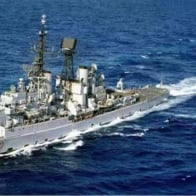Admiral Beez
Major
Why was Germany designing and making diesel engines for aircraft and surface warships when the Wehrmacht could have better used diesels for its tanks, AFVs and trucks? It just seems an odd direction to focus on.
There's some info here.

 www.tankarchives.ca
www.tankarchives.ca
There's some info here.

How the Wehrmacht's Diesel Stalled
A blog about World War II era archive documents, primarily dealing with armoured warfare.
Last edited:

